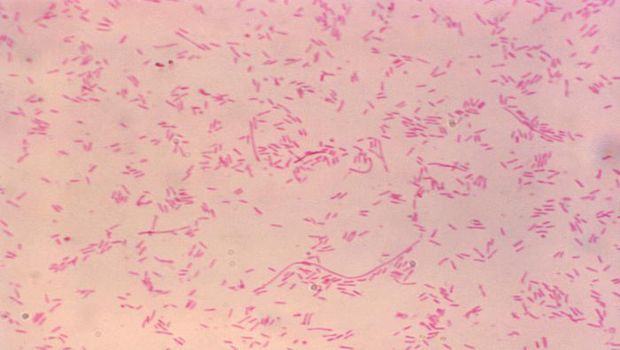Investigators Identify Optimal Conditions for Growth of Legionella Bacteria

The bacteria that cause Legionnaire's disease grow well in warm tap water installations with ample dissolved organic matter--conditions that support the growth of biofilms. The research was published Jan. 6 in Applied and Environmental Microbiology, a journal of the American Society for Microbiology.
The team of Dutch scientists conducting the research was motivated by large outbreaks of Legionnaires' disease to find out what conditions favored growth of the responsible bacterium, Legionella pneumophila, on surfaces exposed to drinking water, said first author Dick van der Kooij, PhD, recently retired as principal microbiologist at KWR Watercycle Research Institute, Nieuwegein, the Netherlands, where this research was conducted.
In the study, the investigators developed a model system that enabled measurement of biofilm formation and growth of Legionella exposed to drinking water without disinfectant, under controlled hydraulic conditions. They used this system to compare a water supply system with a very low concentration of dissolved organic matter with a water supply with a high concentration.
"Drinking water prepared from aerobic groundwater with a low concentration of dissolved natural organic matter induced a very low biofilm concentration that did not support growth of L. pneumophila," said van der Kooij. "Drinking water from two other sources with higher concentrations of organic matter induced higher biofilm concentrations that supported Legionella growth." Legionella bacteria grew exponentially in relation to biofilm concentration, said van der Kooij. Below a threshold concentration of biofilm, Legionella did not multiply.
"Our research demonstrated that microgram-per-liter concentrations of biodegradable compounds in warm drinking water can induce sufficient bacterial growth on surfaces for proliferation of the amoebae that support growth of Legionella," said van der Kooij. "Heating the water increases the concentration of biodegradable compounds, thereby promoting biofilm formation."
Young biofilms support a high concentration of bacterial species that serve as prey for amoebae, and the latter, in turn, serve as hosts for L. pneumophila, said van der Kooij. The amoebae are important because they supply amino acids required by the Legionella.
Legionella pneumophila cause more than 10,000 cases of Legionnaires' disease annually, worldwide, including most of the drinking water associated outbreaks in the U.S. Legionnaires' disease is a life-threatening form of pneumonia that was first identified in an outbreak at a convention of members of the American Legion, in Philadelphia, in 1976. The organism is common in drinking water systems in hotels, hospitals, and homes.
Source: American Society for Microbiology
Top 7 Infection Control Today Articles of 2024: Insights and Innovations
December 30th 2024From advanced sterilization methods to combating antimicrobial resistance, Infection Control Today’s top articles of 2024 delivered actionable strategies for safer healthcare environments and improved patient outcomes.
Revolutionizing Infection Prevention: How Fewer Hand Hygiene Observations Can Boost Patient Safety
December 23rd 2024Discover how reducing hand hygiene observations from 200 to 50 per unit monthly can optimize infection preventionists' time, enhance safety culture, and improve patient outcomes.
Redefining Competency: A Comprehensive Framework for Infection Preventionists
December 19th 2024Explore APIC’s groundbreaking framework for defining and documenting infection preventionist competency. Christine Zirges, DNP, ACNS-BC, CIC, FAPIC, shares insights on advancing professional growth, improving patient safety, and navigating regulatory challenges.
Addressing Post-COVID Challenges: The Urgent Need for Enhanced Hospital Reporting Metrics
December 18th 2024Explore why CMS must expand COVID-19, influenza, and RSV reporting to include hospital-onset infections, health care worker cases, and ER trends, driving proactive prevention and patient safety.